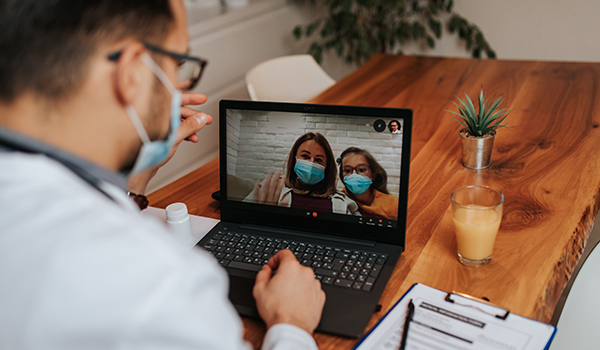
Now that we’re about a year into the pandemic, healthcare organizations have established ways to accommodate multiple influxes of COVID-19 patients. As the pandemic eases and more individuals get vaccinated, hospitals and outpatient surgery centers may face another type of surge: an increase in doctor visits, elective surgeries, and diagnostic tests.
By June 30, 2020, the CDC reported, about 32% of U.S. adults had delayed or avoided routine medical care. Patients not only put off annual checkups but also cancer care and preventative screenings.
Telemedicine has helped pick up the slack for routine visits and consultations. Radiology centers have stepped up sterilization and safety measures to protect women who get mammograms. At-home tests such as Cologuard are being offered as a first line of defense for colon cancer screening.
Still, the backlog of elective surgeries and other procedures creates very real staffing concerns in the event of a surge. A flexible staffing model helps hospitals meet patient demand without sending labor costs through the roof.
3 ways to prepare for patients returning for care post-COVID:
#1) Cross-train staff
.jpeg)
Give nurses some flexibility in their job duties. Cross-train nursing staff so they can serve as either a med-surg or OR RN, for example. Cross-train nurses in non-patient-facing specialties to handle basic patient-facing roles. A nimbler approach allows you to fill staffing gaps more easily.
If you still need specialized staff, tap into CareRev’s local, fully-vetted network of experienced professionals. CareRev provides hospitals and outpatient centers with qualified RNs, CNAs, MAs, surgical techs, and others, all available on demand. This also allows you to staff up to top-of-license, allowing higher-skilled nurses to focus on higher-acuity patients.
#2) Make the most of video

Telehealth is the star of pandemic-era healthcare. In addition to virtual doctor visits and consults, healthcare organizations can use video conferencing tools to improve staffing efficiency. Examples include:
• Employees can work remotely to reduce the risk of contracting or spreading viruses. This helps keep all staff healthy, lowering the number of absences and the need for temporary staff.
• Skilled professionals can share their expertise with many, which reduces staffing burden. For example, according to an article in Harvard Business Review, the early days of the pandemic highlighted a shortage of ventilator operators. Remote technology allows these professionals to provide advice to on-site staff while monitoring multiple patients in real-time.
• Remote workers tend to be happier, more productive, and less stressed than their on-site colleagues. By improving employees’ quality of life, you may also lower employee turnover, reduce the number of sick days taken, and lessen the need to hire additional staff.
#3) Staff up or down on a dime with on-demand talent

“As pandemic waves come and go, and as demand for elective surgeries and other non-COVID-19 related services fall and rise, the number one lesson that healthcare delivery organizations are learning is the need for flexibility in where, when, and how care is delivered,” said Craig Ahrens, CareRev’s Senior Vice President of Strategy and Growth, in an article for Modern Healthcare.
Healthcare organizations have to adapt quickly to changing supply and demand while also adhering to strict budgets. Traditional models that rely primarily on employees come with higher operational expenses. However, relying on agencies is also inefficient. It takes too much time to find the right candidates and too much money to cover agency commissions.
Healthcare organizations can find qualified, on-demand healthcare professionals fast using disruptive technology like CareRev. Rather than work through a recruiter, staffing managers use software to connect directly with their internal resource pool or with CareRev’s local professionals. When you broadcast an open shift, qualified professionals see it—and claim it—right away using the CareRev mobile app.
Whether your next surge is due to a viral outbreak or an influx in joint replacement surgeries, CareRev has you covered. When implemented as part of a flexible staffing model, you’ll have the engaged workforce you need to weather healthcare’s ongoing peaks and valleys.





